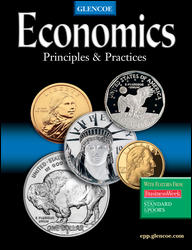
Economics Principles & PracticesChapter 6: Prices and Decision MakingChapter OverviewsIn this chapter we look at how prices are established and how prices function as a system to allocate resources between markets. Price is the monetary value of a product, which is normally established by supply and demand and is an important economic concept. Section 1 describes prices as signals to both producers and consumers. High prices are signals for businesses to produce more and for consumers to buy less. Low prices signal the reverse. Prices have the advantage of being neutral and flexible. In addition, they permit freedom of choice, have no administrative costs, are highly efficient, and are easily understood by everyone. Nonprice allocations systems such as rationing exist, but they suffer from a number of problems, including the issue of allocating ration coupons in a fair and equitable manner. Section 2 explains how economists develop economic models of markets with supply and demand curves. In a competitive market, the forces of supply and demand establish prices. A temporary surplus drives prices down; a temporary shortage forces prices up. Eventually the market reaches the equilibrium price where there are neither shortages nor surpluses. Changes in supply or demand can disturb the market, but the market will tend to find its new equilibrium with the help of temporary shortages and/or surpluses. Competitive markets represent the ideal, but the lessons learned from them apply to other markets as well. Section 3 shows how prices work as a system to allocate resources between markets. However, if prices are fixed in one market, temporary shortages and surpluses tend to become permanent. A price ceiling such as rent controls is one form of fixed price; a price floor such as the minimum wage is another example. If prices are free to adjust, they change when either the demand or supply curves change. The size of the price change is affected by elasticity—the more elastic the curves, the smaller the price change; the less elastic the curves, the larger the price change. Agriculture is especially hard-hit by price changes because demand and supply tend to be inelastic, while weather often causes the supply curve to change. |  |















